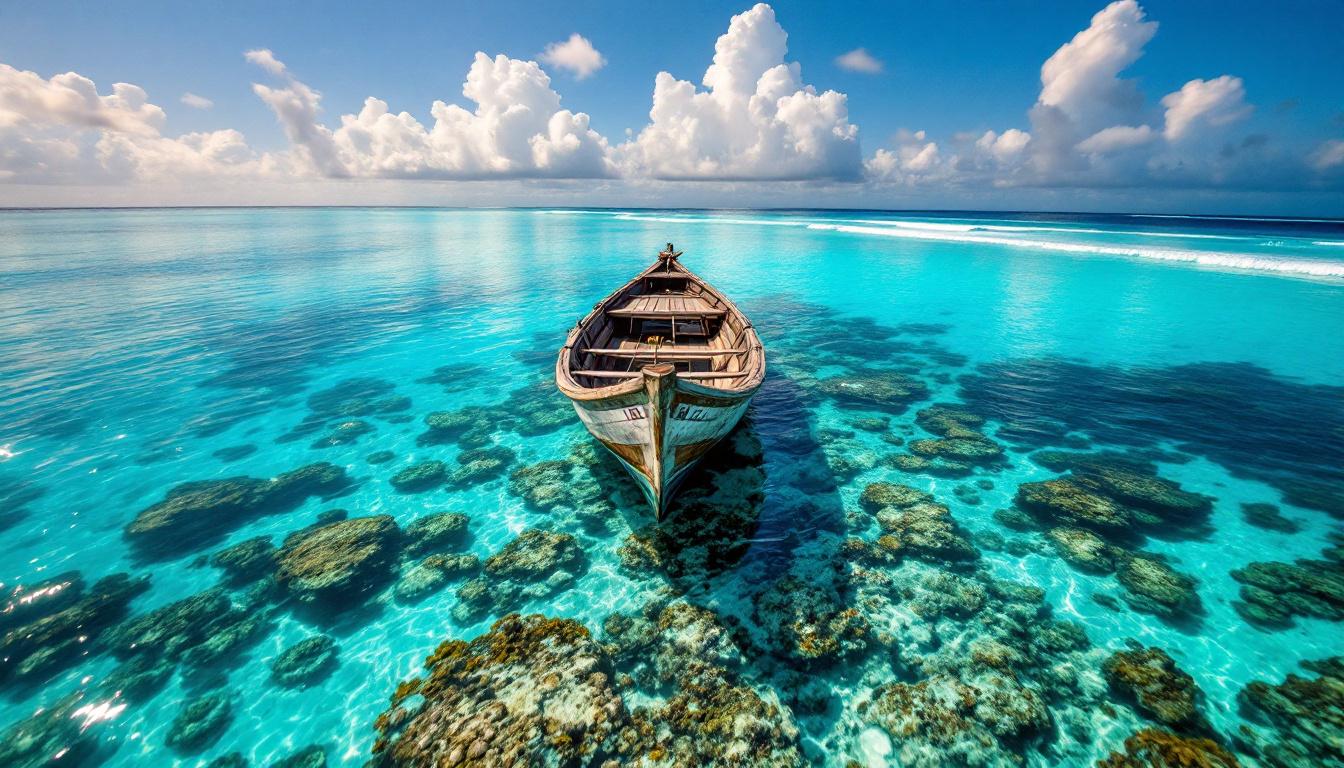While Instagram influencers flood Tortola’s beaches and cruise ships disgorge thousands onto Virgin Gorda’s boulders, Anegada remains the Caribbean’s best-kept secret. This flat coral island, home to just 450 residents, protects the region’s largest barrier reef while maintaining an authentic fishing culture that mass tourism hasn’t touched.
Most travelers skip Anegada entirely, deterred by the 90-minute ferry ride and challenging navigation around Horseshoe Reef. But those who make the journey discover what the crowded British Virgin Islands used to be before development changed everything forever.
The locals call it “The Drowned Island” – *tierra anegada* in Spanish – and after visiting both Tortola’s traffic-clogged roads and Anegada’s empty beaches, you’ll understand why this remote sanctuary represents the Caribbean’s last authentic escape.
Why Tortola disappoints modern travelers
Cruise ship crowds destroy the island experience
Tortola welcomes over 800,000 cruise passengers annually, creating Disney-like crowds at every beach and restaurant. Road Town’s streets become impassable when multiple ships dock simultaneously, while popular spots like Cane Garden Bay feel more like Miami Beach than a Caribbean paradise.
Overdevelopment erases local culture
Luxury resorts and chain restaurants have replaced traditional Caribbean establishments across Tortola. Local fishermen struggle to access beaches now dominated by resort guests, while authentic *roti* shops compete with overpriced tourist cafes that serve watered-down versions of island cuisine.
The superior advantages Anegada actually provides
Horseshoe Reef creates unmatched diving experiences
Horseshoe Reef stretches 18 miles around Anegada’s perimeter, making it the fourth-largest barrier reef system globally. Unlike Belize’s crowded dive sites, you’ll often find yourself alone with nurse sharks, Southern stingrays, and pristine elkhorn coral formations that disappeared from most Caribbean waters decades ago.
Authentic fishing culture survives tourism pressure
Anegada’s fishermen still supply lobster and conch to restaurants across the BVI, maintaining traditions that vanished on developed islands. The annual Lobster Festival in November celebrates this heritage with local families, not tour groups, gathering to share recipes passed down through generations.
The authentic culture mass tourism destroys
Local families protect their island’s character
Anegadian families deliberately limit tourism development to preserve their salt pond ecosystems and protect the endangered Anegada rock iguana. Unlike Virgin Gorda’s commercialized attractions, here you’ll encounter wild flamingos and ospreys in their natural habitat, guided by locals who’ve studied these species for decades.
Traditional Caribbean hospitality thrives without commercialization
Restaurants like Big Bamboo serve meals prepared by the owner’s grandmother using recipes unchanged since the 1940s. No printed menus, no credit card machines – just authentic Caribbean cuisine served on plastic tables under sea grape trees, exactly as it should be.
The practical benefits that matter most
Accommodation costs remain affordable for real travelers
While Tortola resort rooms average $400+ per night, Anegada’s guesthouses and small resorts charge $120-180 for beachfront accommodations. You’ll get more authentic experiences at local establishments than sterile resort complexes that could exist anywhere in the Caribbean.
Ferry schedules naturally limit crowds
Only two ferries daily connect Anegada to Virgin Gorda, automatically controlling visitor numbers. This isn’t an inconvenience – it’s a feature that ensures beaches like Loblolly Bay never feel crowded, even during peak season when other BVI islands become unbearable.
Anegada’s remoteness protects everything authentic about Caribbean island life. The difficult access that deters casual tourists becomes your advantage – 18 miles of pristine reef, empty beaches, and genuine local culture that disappeared from developed islands long ago.
Book that ferry ticket from Virgin Gorda, pack reef-safe sunscreen, and prepare to experience the Caribbean as it existed before mass tourism changed everything. Anegada’s 450 residents are counting on travelers who understand the difference between visiting a place and preserving it.
Essential information for visiting Anegada
How do I reach Anegada from other BVI islands?
Take the ferry from Virgin Gorda (90 minutes, $45 round trip) or charter a boat from Tortola. Flights operate from Beef Island but are expensive and weather-dependent. Most visitors combine Anegada with a Virgin Gorda trip.
What makes Horseshoe Reef special for divers?
Horseshoe Reef contains over 300 documented shipwrecks and pristine coral formations rarely found elsewhere in the Caribbean. Water visibility averages 80-100 feet, and marine life includes nurse sharks, eagle rays, and healthy populations of reef fish.
When is the best time to visit for authentic experiences?
November through April offers perfect weather and the annual Lobster Festival. Avoid cruise ship seasons (December-March) on other BVI islands by staying exclusively on Anegada during peak tourism periods.
Are there restrictions on visiting to protect the environment?
While no formal visitor limits exist, local establishments naturally control numbers through limited accommodation. Practice reef-safe snorkeling, respect nesting bird areas, and support local businesses that maintain traditional practices.
What should I expect from Anegada’s dining scene?
Fresh lobster, conch fritters, and locally caught fish prepared in traditional Caribbean styles. Most restaurants operate seasonally and don’t take reservations – arrive early and embrace the relaxed island timing that makes Anegada special.
